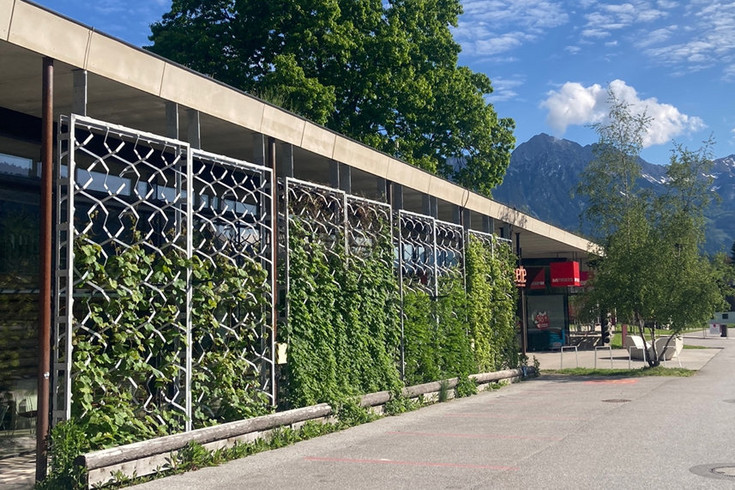Neue Publikation – Poiss et al. 2025
New Paper published – Vertical Greenery as Natural Shading of Glass Facades: Bioshading Coefficients for 4 Climbing Plant Species for Assessment of Shading Performance
Poiss, M., Briefer, A., Scharf, B., Spörl, P., & Stangl, R. (2025). Vertical Greenery as Natural Shading of Glass Facades: Bioshading Coefficients for 4 Climbing Plant Species for Assessment of Shading Performance. Building and Environment, 113399
https://doi.org/10.1016/j.buildenv.2025.113399
06.07.2025
The paper introduces the application of Bioshading Coefficients for quantifying shading performance of commonly used climbing plants.
The research focused on investigating the potential of vertical greening systems (VGS) as natural shading elements for a glazed façade on a public building. The study examined measurement techniques and analytical methods for evaluating shading efficiency and thermal performance. 4 different climbing plants, commonly used in VGS were investigated: Vitis coignetiae, Humulus lupulus, Wisteria sinensis and Aristolochia macrophylla Novel data on Wall Leaf Area Index and Plant Coverage to assess plant growth performance in the establishment phase are introduced. Shading performance was assessed by determining the transmission rates of solar irradiance throughout the annual cycle.
The key output of this paper is new data on bioshading coefficients
The study was carried out in context of the project GLASGrün, project number 4231830, funded by the Federal Ministry Republic of Austria Climate Action, Environment, Energy, Mobility, Innovation and Technology and the Austrian Research Promotion Agency (FFG) in the program "Stadt der Zukunft".

Southeastern façade of the GLASGrün demonstration site in Söll, Tyrol. Vertical Greening System retrofit in front of the buildings glass façade
